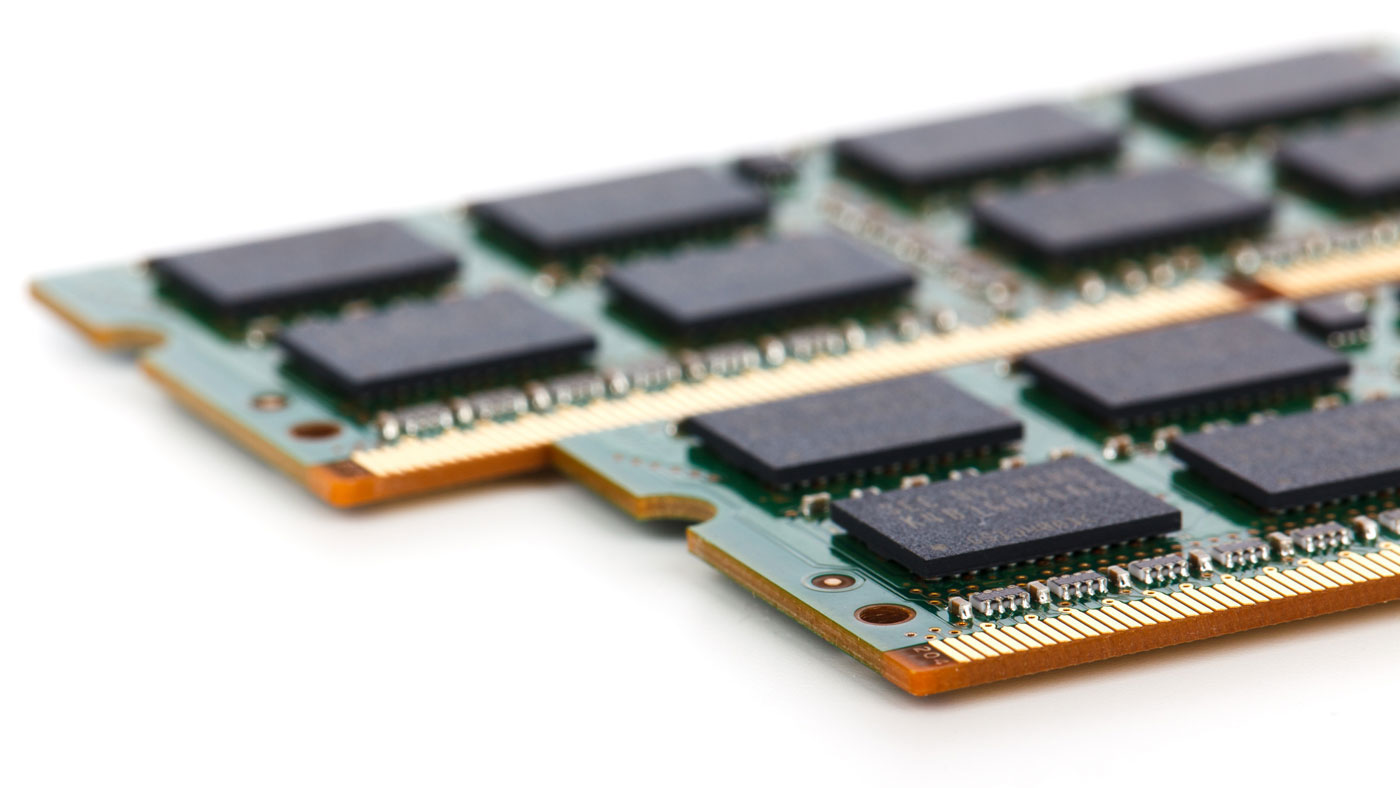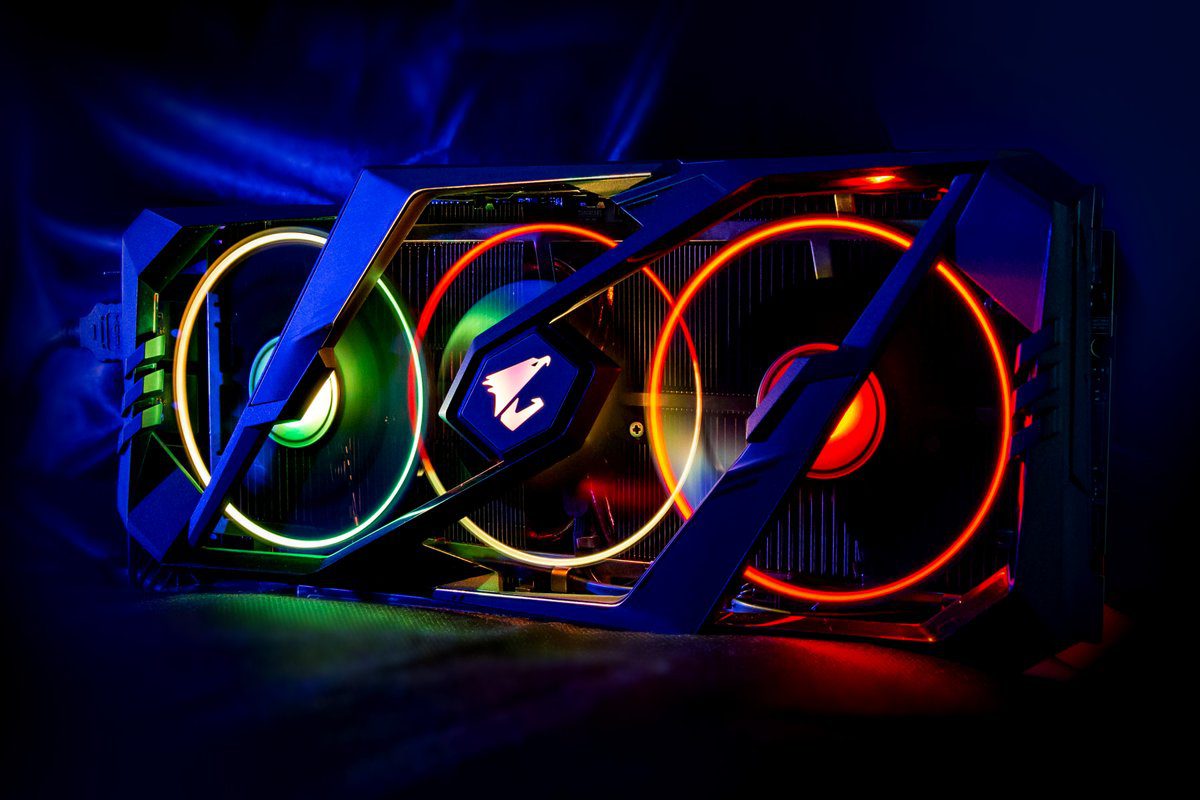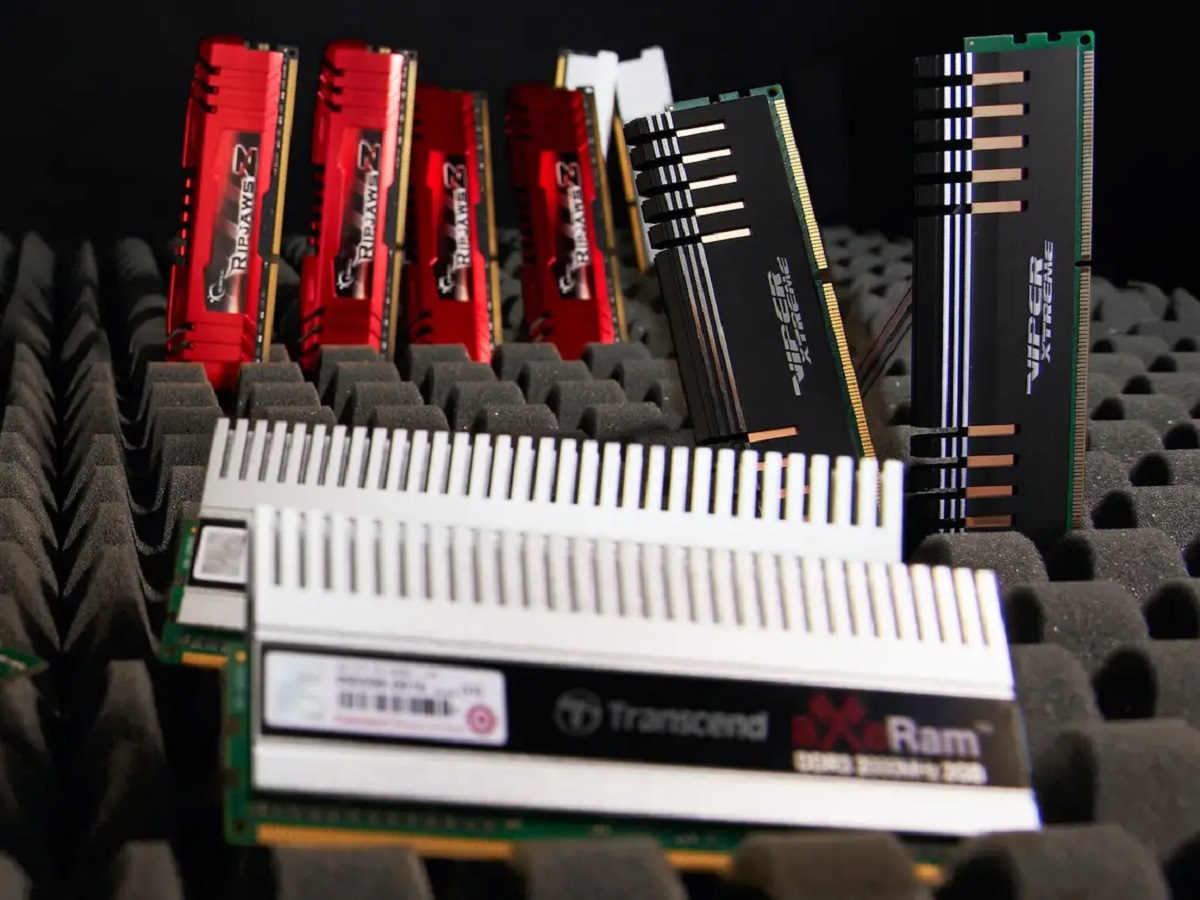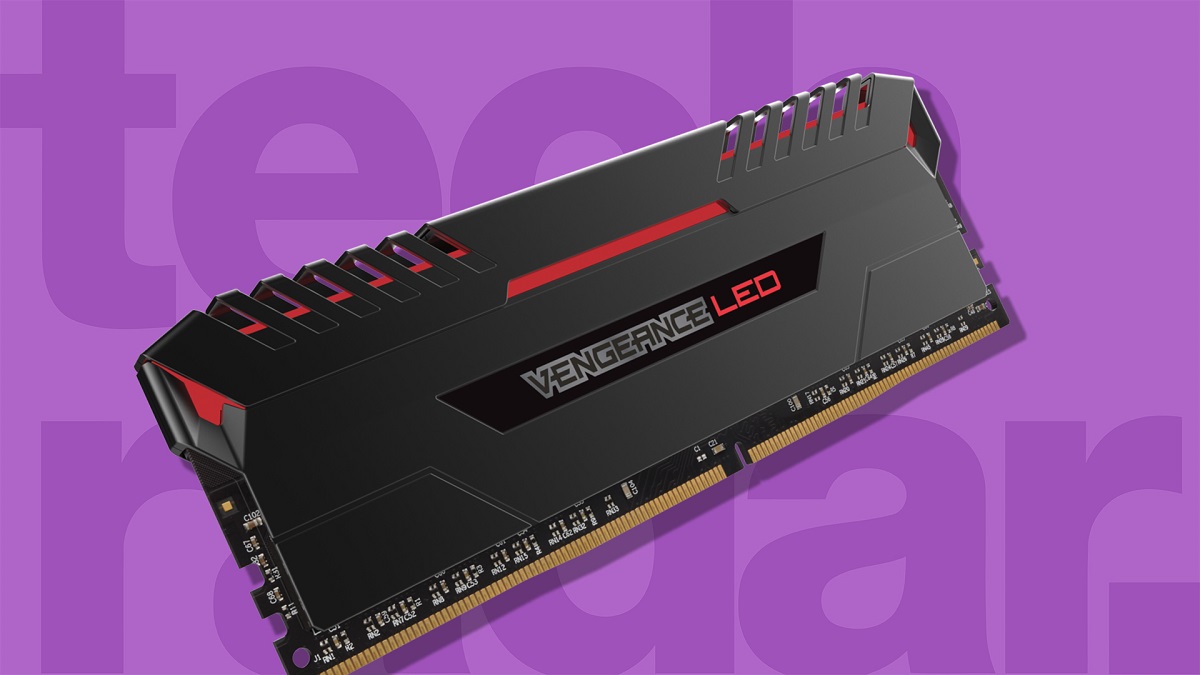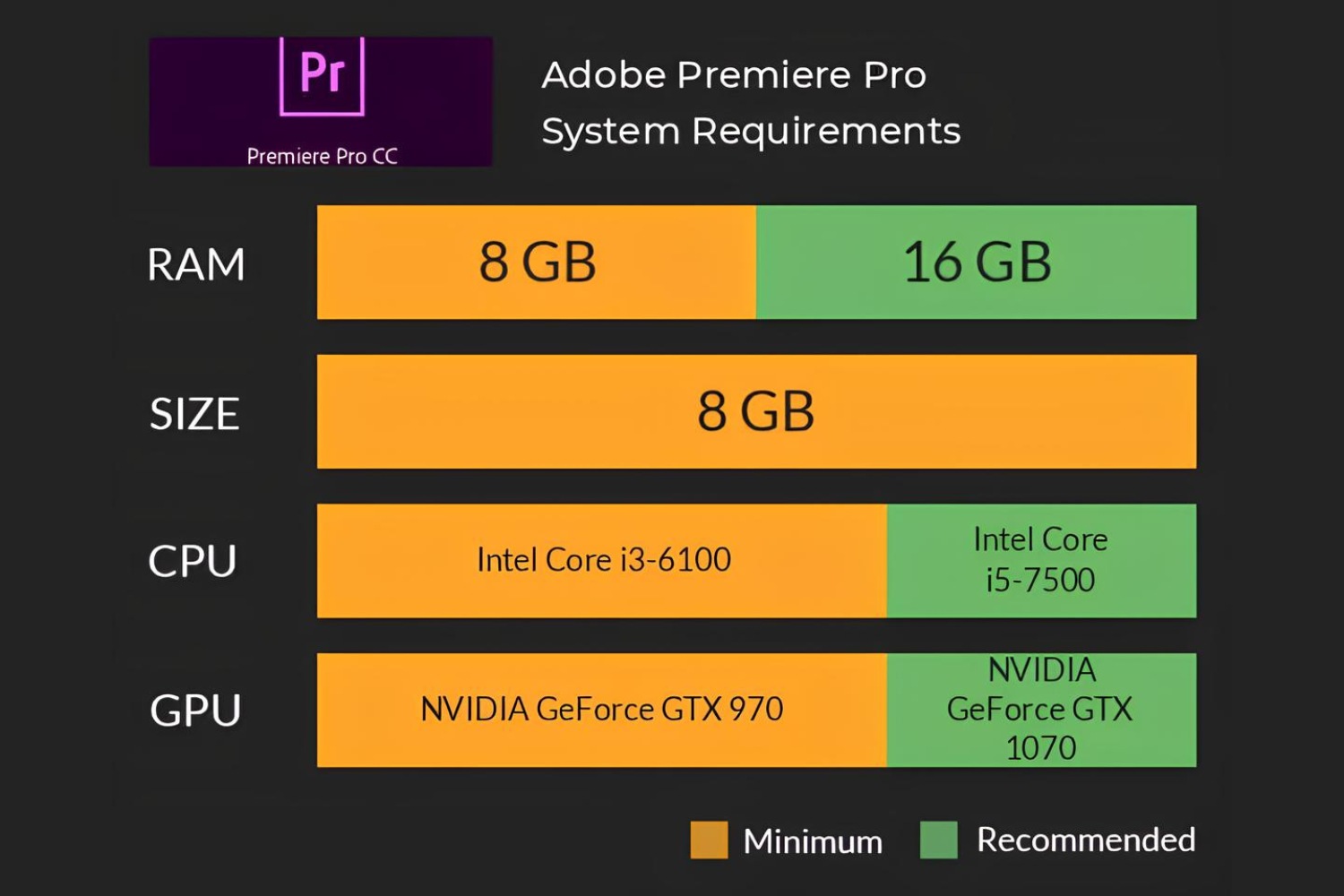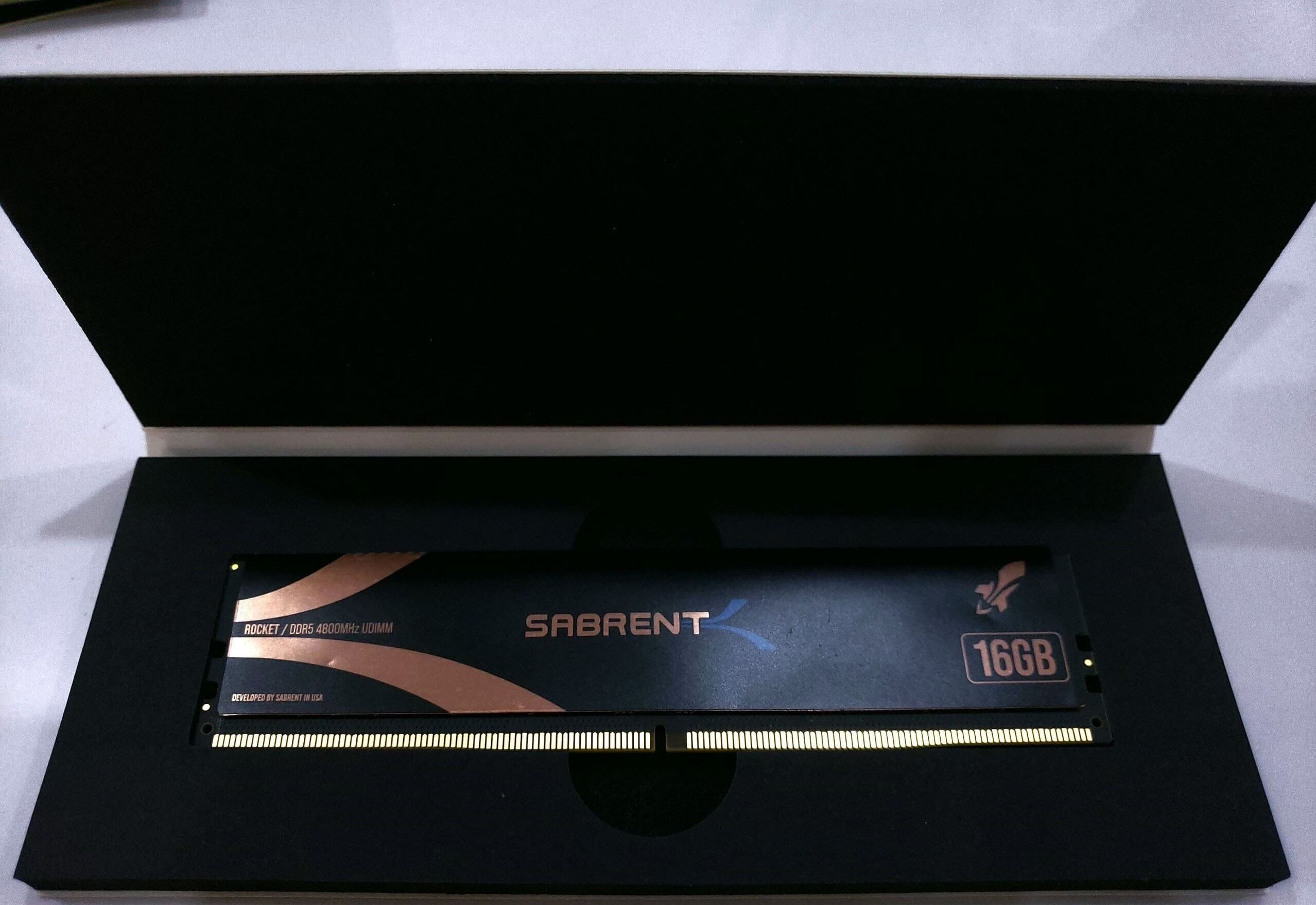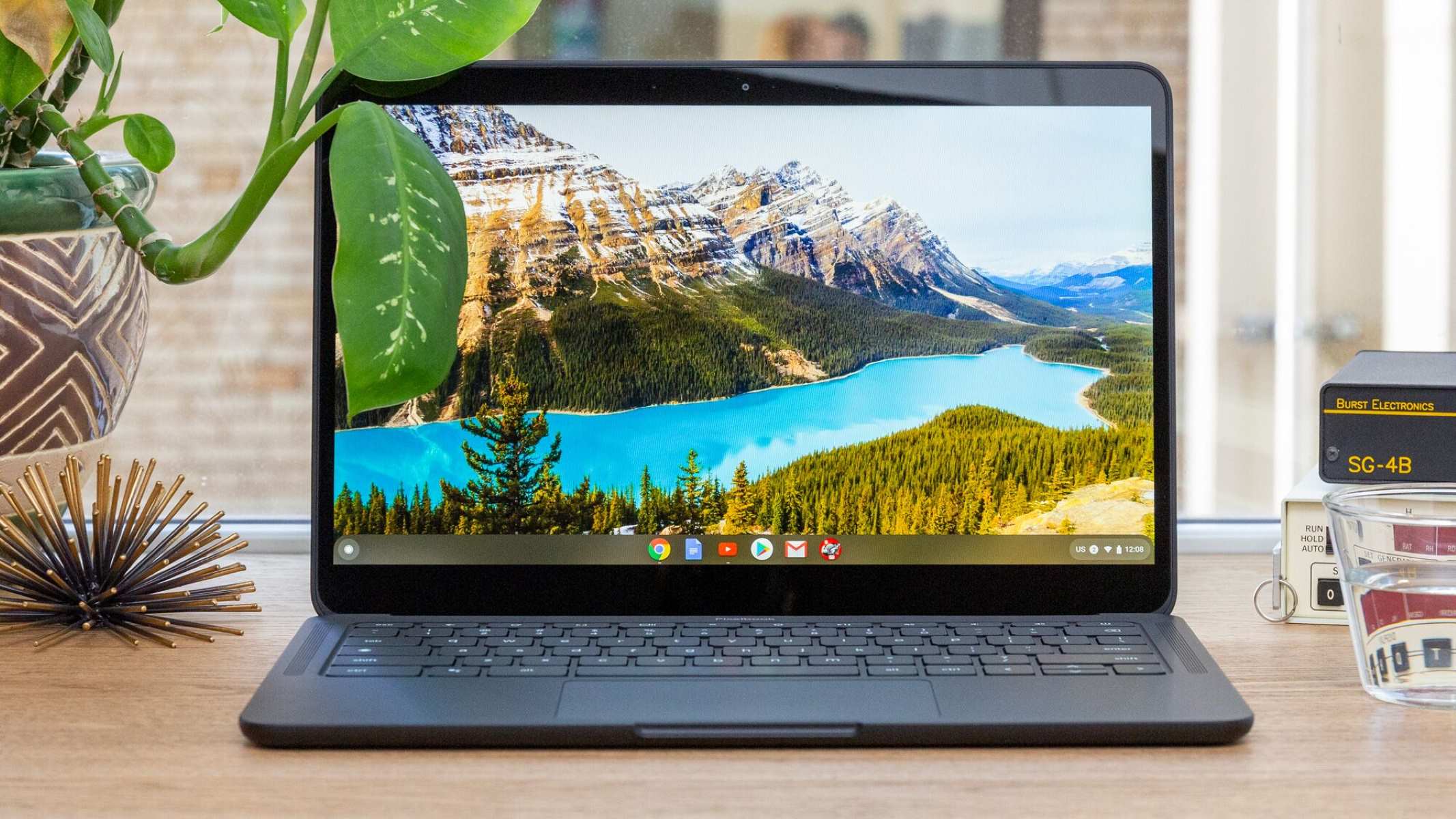Introduction
Video editing has become increasingly popular, especially with the rise of high-resolution formats like 4K. However, editing videos in 4K requires a considerable amount of processing power and memory. One crucial component that plays a significant role in ensuring smooth and efficient video editing is RAM (Random Access Memory).
RAM is a type of temporary storage that allows your computer to access and manipulate data quickly. When it comes to video editing, a sufficient amount of RAM is vital to handle the large file sizes and complex tasks involved. But how much RAM do you actually need for 4K video editing?
In this article, we will delve into the intricacies of RAM and its importance in video editing, specifically for 4K video editing. We will explore the factors to consider when determining your RAM requirements, the minimum RAM needed for basic 4K video editing, and the recommended RAM for professional-grade 4K video editing purposes.
Furthermore, we will provide useful tips on how to optimize RAM usage while editing 4K videos, highlighting the benefits of having more RAM in your system. Finally, we will discuss finding the right balance between RAM and other hardware components to ensure the overall performance and efficiency of your video editing setup.
Stay tuned as we guide you through the world of RAM and help you determine how much RAM you truly need to unleash your creativity and achieve smooth and seamless 4K video editing experiences.
Understanding RAM and its Importance in Video Editing
Random Access Memory, or RAM, is a critical component in any computer system, particularly when it comes to video editing. RAM is a form of computer memory that stores data that is actively being used by the computer’s processor. It allows for quick access to information, which is essential for tasks that require a high level of performance such as video editing.
When editing videos, the software you use, along with any files being manipulated, are loaded into RAM for processing. This means that the more RAM you have, the more data can be stored and accessed quickly, resulting in smoother editing experiences.
In video editing, RAM plays a crucial role in handling the large file sizes associated with 4K videos. 4K resolution offers four times the pixels of standard high-definition videos, resulting in significantly larger file sizes. Without sufficient RAM, your computer may struggle to load and process these large files, leading to laggy playback and slow rendering times.
Moreover, RAM is responsible for storing temporary data generated during video editing tasks. For example, when you apply effects, add transitions, or make adjustments to the video, the software utilizes RAM to store these changes in real-time. Having ample RAM allows for seamless and efficient editing, as the software can quickly retrieve and manipulate the data without any bottlenecks.
Furthermore, RAM also influences multitasking capabilities while video editing. Many video editing professionals work with multiple applications simultaneously, such as video editing software, color grading tools, and audio editing programs. With sufficient RAM, your computer can handle these multitasking demands smoothly, ensuring a seamless workflow.
Overall, RAM plays a crucial role in video editing by providing the necessary resources to handle large file sizes, store temporary data, and facilitate multitasking. Having an adequate amount of RAM is essential to ensure a smooth and efficient editing process, allowing you to focus on unleashing your creativity without the frustration of slow performance or laggy playback.
Factors to Consider when Determining RAM Requirements for 4K Video Editing
When determining the RAM requirements for 4K video editing, there are several factors to consider. These factors will help guide you in determining the optimal amount of RAM needed for your specific editing needs. Let’s take a look at some of these key factors:
1. File Size: 4K videos have significantly larger file sizes compared to lower resolution formats. The larger the file sizes, the more RAM is required to handle the data efficiently. It’s essential to take into account the average file size of your 4K videos and ensure you have enough RAM to comfortably load and process them without performance issues.
2. Video Editing Software: Different video editing software have varying RAM requirements. Some software may utilize RAM more efficiently than others. It’s essential to check the recommended RAM specifications provided by the software developer. Consider both the minimum requirements and the recommended specifications to ensure optimal performance.
3. Complexity of Projects: The complexity of your video editing projects is another crucial factor. If you primarily work on simple projects with minimal effects and transitions, you may require less RAM compared to those working on complex projects with numerous layers, effects, and high bitrates. The more complex your projects, the more RAM you will need to handle the increased workload.
4. Multitasking: Do you often multitask while editing? If you frequently have other applications running simultaneously, such as color grading software or audio editing tools, you will need additional RAM to provide enough resources for smooth multitasking. Consider the RAM requirements of these additional applications as well.
5. Future-Proofing: When determining RAM requirements, it’s always important to look towards the future. Consider how the demand for higher resolution videos may evolve over time. Investing in a higher amount of RAM now will help future-proof your editing setup, allowing you to handle upcoming technologies and larger file sizes without needing to upgrade your RAM again in the near future.
By taking these factors into account, you can make an informed decision about how much RAM you need for 4K video editing. It’s crucial to strike a balance between your budget and performance requirements, ensuring that you have enough RAM to handle your projects efficiently without overspending on unnecessary resources.
Minimum RAM Requirements for Basic 4K Video Editing
When it comes to basic 4K video editing, there are minimum RAM requirements that you should consider to ensure smooth and efficient editing performance. While these requirements may vary depending on specific factors, such as the software you are using and the complexity of your projects, there are general guidelines to follow. Here are the minimum RAM requirements for basic 4K video editing:
1. 16GB of RAM: At a minimum, it is recommended to have 16GB of RAM for basic 4K video editing. This amount of RAM provides enough resources to handle the large file sizes associated with 4K videos and ensures smooth playback during editing.
2. Operating System Considerations: Keep in mind that your operating system also consumes a portion of your computer’s RAM. If you are using a Windows-based system, it’s essential to leave some available RAM for the operating system to run smoothly alongside your video editing software. Aim for at least 8GB of RAM to accommodate the needs of the operating system.
3. Dedicated Graphics Card: While RAM is crucial, it’s important to note that a dedicated graphics card with its own VRAM (Video Random Access Memory) can alleviate some of the memory requirements. The VRAM in a graphics card is specifically designed to handle the visual processing demands of video editing. Investing in a graphics card with at least 4GB of VRAM can help in achieving smooth playback and rendering of 4K videos.
4. Storage Considerations: Besides RAM, it’s essential to have sufficient storage space for your 4K video files. Having a fast and spacious SSD (Solid State Drive) can significantly impact the overall performance of your editing process. Make sure you have enough storage capacity to handle the large-sized 4K video files efficiently.
While these minimum RAM requirements provide a starting point for basic 4K video editing, keep in mind that they may not be sufficient for complex projects or demanding editing tasks. If you anticipate working with multiple layers, effects, or high-bitrate footage, consider increasing your RAM to ensure smooth performance and avoid potential bottlenecks.
Ultimately, it’s crucial to strike a balance between meeting the minimum RAM requirements for 4K editing and your specific editing needs. Having sufficient RAM is key to achieving smooth playback, seamless editing, and efficient rendering of your 4K videos.
Recommended RAM for Professional 4K Video Editing
For professional 4K video editing, where complex projects and demanding editing tasks are the norm, having an adequate amount of RAM is crucial to ensure optimal performance and efficiency. While the minimum RAM requirements may suffice for basic editing needs, professionals often require higher capacities to handle the intensive workload. Here are the recommended RAM specifications for professional 4K video editing:
1. 32GB to 64GB of RAM: Professionals working with 4K videos should aim for a minimum of 32GB of RAM. This higher capacity allows for smoother playback, faster rendering, and seamless multitasking. For more demanding projects or if you frequently work with multiple video streams or complex effects, increasing the RAM to 64GB or more is highly recommended.
2. RAM Speed: In addition to capacity, the speed of the RAM modules can greatly impact performance. Look for RAM modules with higher clock speeds and low latency. Faster RAM speeds allow for quicker data access and smoother processing, resulting in improved performance during editing tasks such as applying effects, scrubbing through the timeline, or rendering the final video.
3. Memory Configuration: Consider the memory configuration of your system. Opting for a dual-channel or quad-channel memory configuration, depending on your motherboard’s capabilities, can further enhance memory bandwidth and improve the overall performance of your editing system.
4. Future Expansion: While 32GB to 64GB of RAM is recommended for professional 4K video editing, it’s essential to consider future expansion as well. As technology advances and file sizes continue to grow, having the option to upgrade your RAM in the future without replacing the entire system can be beneficial. Ensure that your motherboard has enough RAM slots and supports higher capacities to accommodate future expansion if needed.
5. System Requirements of Editing Software: Take into account the recommended system requirements of your video editing software. Some professional-grade editing software, such as Adobe Premiere Pro or DaVinci Resolve, may have specific RAM recommendations based on their complex features and functionality. It’s essential to review these requirements and ensure that your RAM specifications meet or exceed the software’s recommendations for the best performance possible.
Ultimately, the recommended RAM for professional 4K video editing goes beyond the minimum requirements to provide a higher level of performance, efficiency, and future-proofing. Investing in sufficient RAM capacity, considering RAM speed and configuration, and aligning with the system requirements of editing software will help ensure a smooth and seamless editing experience, allowing you to tackle even the most demanding 4K video projects with ease.
How to Optimize RAM Usage while Editing 4K Videos
While having sufficient RAM for 4K video editing is essential, optimizing its usage can significantly enhance the overall performance and efficiency of your editing workflow. Here are some tips to help you optimize RAM usage while editing 4K videos:
1. Close Unnecessary Applications: Before you start editing, close any unnecessary applications running in the background. These applications consume RAM, and closing them frees up valuable resources for your editing software, ensuring smoother performance.
2. Use a Lightweight Preview Format: Most video editing software allows you to set a lower resolution preview format for smoother playback during editing. By using a lightweight preview format, you can reduce the RAM requirements and improve real-time playback performance, making it easier to work with 4K footage.
3. Clear Cache Files Regularly: Video editing software often creates cache files to improve performance. However, these cache files can consume a significant amount of RAM over time. Clearing the cache regularly can free up RAM and prevent potential performance issues caused by excessive cache usage.
4. Optimize Timeline and Effects: Minimize the number of layers and effects applied to the timeline when editing. Each layer and effect adds to the RAM usage, and excessive use can quickly overload your system’s resources. Optimize your editing process by utilizing nested sequences, grouping layers, and using effects sparingly to reduce RAM overhead.
5. Render Preview Files: Consider rendering preview files for complex sections of your timeline. By rendering preview files, you can offload the real-time processing from your RAM to the hard drive, allowing for smoother playback and reducing the strain on your system’s RAM resources.
6. Adjust RAM Allocation in Software Settings: Many video editing software allows you to adjust the amount of RAM allocated to the application. Check the settings of your editing software and allocate an appropriate amount of RAM based on the available resources of your system. Be cautious not to allocate too much, as it may negatively impact the performance of other applications running concurrently.
7. Close Background Processes: Check for any unnecessary background processes or services running on your computer that may consume RAM. Disable or close these processes, as they can free up RAM and improve the overall performance of your editing software.
8. Upgrade to Faster RAM: If you are still experiencing performance issues despite optimizing your RAM usage, consider upgrading to faster RAM modules. Higher clock speeds and lower latency can significantly improve the speed at which data is accessed, resulting in better overall performance during editing tasks.
By implementing these optimization techniques, you can make the most efficient use of your system’s RAM resources while editing 4K videos. Remember, every little improvement can contribute to a smoother editing experience, allowing you to focus on your creativity and produce exceptional 4K video content.
Benefits of Having More RAM in 4K Video Editing
Having more RAM in your system can bring numerous benefits when it comes to 4K video editing. The increased amount of RAM provides additional resources and allows for smoother and more efficient editing experiences. Here are the benefits of having more RAM in 4K video editing:
1. Improved Performance: More RAM ensures that your system has ample capacity to handle the large file sizes and complex tasks involved in 4K video editing. It enables faster loading of files, smoother real-time playback, and quicker rendering times, resulting in overall improved performance and productivity.
2. Seamless Multitasking: Working on 4K video projects often involves multitasking with various applications simultaneously. With more RAM, your system can handle multitasking with ease, allowing you to switch between video editing software, color grading tools, and audio editing programs without experiencing lag or performance issues.
3. Quick Access to Data: RAM provides quick access to data stored during the editing process. With more RAM, your system can store a larger amount of data in the memory, reducing the need to retrieve information from the slower hard drive or solid-state drive. This leads to faster access to frequently used data, resulting in smoother and more efficient editing workflows.
4. Smooth Playback and Editing: Insufficient RAM can lead to choppy playback and editing experiences, especially when working with 4K videos. Having more RAM ensures smoother playback and editing, allowing you to navigate the timeline, apply effects, and make precise adjustments in real-time without disruptions or laggy performance.
5. Enhanced Effects and Transitions: More RAM provides the necessary resources to handle complex effects and transitions effortlessly. With increased memory, your system can process and render these effects more efficiently, resulting in seamless and visually appealing videos without compromising on the quality of your edits.
6. Future-Proofing: As technology rapidly advances, the demands of video editing are also increasing, with higher resolution formats and more demanding visual effects becoming the norm. Having more RAM in your system future-proofs your editing setup, allowing you to handle the growing demands of tomorrow’s video editing technologies.
7. Stability and Reliability: Insufficient RAM can lead to instability and crashes, especially when working on memory-intensive tasks like 4K video editing. More RAM provides stability and reliability, preventing crashes and unexpected interruptions during your creative process. It allows your system to handle the memory demands of complex projects without compromising the integrity of your work.
8. Efficient Resource Management: With more RAM, your system can allocate resources more efficiently, avoiding bottlenecks and optimizing overall resource management. This ensures that your system runs smoothly, utilizes its resources effectively, and provides the best possible experience during 4K video editing.
By having more RAM in your system, you can unlock these benefits and elevate your 4K video editing capabilities. It allows you to work more efficiently, handle complex projects, and ensure seamless playback and rendering, enabling you to focus on your creativity and produce high-quality videos that truly stand out.
Finding the Right Balance Between RAM and Other Hardware Components
When it comes to optimizing your 4K video editing setup, finding the right balance between RAM and other hardware components is crucial. While RAM is vital for smooth editing, it is important to consider the overall system configuration to ensure optimal performance and efficiency. Here are important factors to consider when finding the right balance between RAM and other hardware components:
1. CPU: The CPU (Central Processing Unit) is the brain of your computer and plays a significant role in video editing. It is responsible for processing tasks and executing instructions. A powerful CPU paired with sufficient RAM ensures that your system can handle the computational demands of 4K video editing. Look for CPUs with multiple cores and high clock speeds to maximize performance.
2. Graphics Card: While RAM is essential, a dedicated graphics card also plays a crucial role in video editing. It assists in rendering and processing visual effects, reducing the load on the CPU and RAM. Look for graphics cards with ample VRAM (Video Random Access Memory) to handle the demands of 4K video editing effectively.
3. Storage: In addition to RAM, having fast and spacious storage is crucial for efficient video editing. Consider investing in SSDs (Solid State Drives) for your operating system, applications, and current projects, as they offer faster read and write speeds compared to traditional hard drives. Use large capacity HDDs (Hard Disk Drives) or NAS (Network Attached Storage) devices for long-term storage of completed projects and raw footage.
4. Cooling System: Video editing tasks can put a significant load on your hardware, causing increased heat generation. Adequate cooling is essential to maintain system stability and prevent thermal throttling. Ensure that your computer has efficient cooling mechanisms, such as CPU coolers and case fans, to keep temperatures in check during intensive video editing sessions.
5. Power Supply: An often overlooked component, a reliable and adequate power supply is crucial for a stable and efficient video editing setup. Ensure that your power supply has enough wattage to handle the demands of your entire system, including the CPU, graphics card, RAM, and other peripherals.
6. Consider Upgradeability: When balancing your hardware components, consider the future upgradeability of your system. As technology advances and requirements change, you may need to upgrade certain components. Choose a motherboard that supports higher RAM capacities, has expansion slots for additional storage or graphics cards, and is compatible with the latest CPU generations.
7. Budget Considerations: While it’s important to aim for the best hardware components for your video editing needs, budget constraints may come into play. Assess your budget and priorities, and allocate your resources accordingly. Strive for a balance that ensures optimal performance within your budgetary constraints.
By considering these factors and finding the right balance between RAM and other hardware components, you can create a well-rounded and efficient video editing system. Each component should complement one another, working together to provide a seamless and productive editing experience, allowing you to unleash your creativity and achieve outstanding results in your 4K video projects.
Conclusion
In the world of 4K video editing, having the right amount of RAM is crucial for a smooth and efficient editing experience. Whether you are a beginner or a professional, understanding the importance of RAM and how to optimize its usage is essential to achieve the best results.
We explored the various factors to consider when determining your RAM requirements, such as file size, video editing software, project complexity, multitasking, and future-proofing. By taking these factors into account, you can ensure that you have enough RAM to handle the demands of 4K video editing without compromising performance or productivity.
We discussed the minimum RAM requirements needed for basic 4K video editing, recommended RAM specifications for professional-grade editing, and provided tips on how to optimize RAM usage while editing 4K videos. These insights will help you make informed decisions when choosing the right amount of RAM for your specific editing needs.
Having more RAM in your system brings several benefits, including improved performance, seamless multitasking, quick data access, smooth playback and editing, enhanced effects and transitions, future-proofing, stability, and efficient resource management. It allows you to handle the demands of 4K video editing with ease, unleashing your creative potential.
However, it’s important to find the right balance between RAM and other hardware components, including CPU, graphics card, storage, cooling system, and power supply. A well-rounded system configuration ensures optimal performance and efficiency, creating a solid foundation for your video editing endeavors.
In conclusion, investing in sufficient RAM and optimizing its usage, along with other key hardware components, will elevate your 4K video editing capabilities. By finding the right balance, you can create a system that enables you to work seamlessly, handle complex projects, and achieve exceptional results in your video editing journey.







